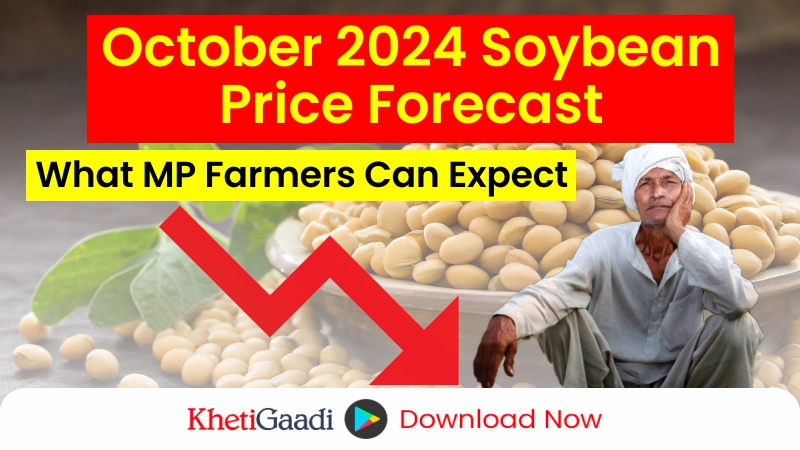As October approaches, soybean farmers in Madhya Pradesh, one of India’s largest soybean-producing regions, are looking ahead to understand the potential prices they might see at the mandis (markets) this year. Analysing data from the past few years, from 2022 to 2024, can provide insight into price trends and help farmers decide when to sell their produce to get the best return.
KhetiGaadi always provides right tractor information
Soybean Price Trends in Madhya Pradesh
In the past few years, soybean prices in Madhya Pradesh have followed a predictable pattern. Prices usually drop during the peak harvest season when large volumes of soybeans flood the market, increasing supply and putting downward pressure on prices. Farmers who recognize this trend can plan their sales to avoid price drops or benefit from higher prices later in the season.
If you wish to know organic methods to increase your overall cultivation yield, please call KhetiGaadi counsellor on 07875114466 or write an email to connect@khetigaadi.com
What to Expect in October 2024?
Looking ahead to October 2024, historical data suggests that soybean prices will likely continue to decline, possibly ranging between Rs 4,200 and Rs 4,300 per quintal. This prediction is based on the following key factors:
- High Arrival Pressure: As seen in 2022 and 2023, large arrivals in October drive prices down. In September 2024, the price was Rs 4,411.39 per quintal, and with even higher arrivals expected in October (potentially exceeding 800,000 tonnes), prices are likely to fall further.
- Stable Global Demand: Global demand for soybeans is expected to remain steady. While international demand plays a role in price fluctuations, no major changes in global markets are expected to push prices sharply up or down in the coming months.
Key Factors Influencing Soybean Prices
Several factors influence soybean prices in Madhya Pradesh, and farmers should monitor these closely:
- Mandi Arrivals: The volume of soybeans arriving in mandis during the harvest season (September to December) is a major factor in price movements. Higher arrivals typically lead to lower prices, as seen in previous years. In September 2024, for instance, 220,860 tonnes arrived, and prices were Rs 4,411 per quintal.
- Global Demand: Soybean prices are also affected by international demand, especially from large buyers like China. If global demand increases, it could stabilize or even increase prices. However, if global production rises or demand falls, prices may decline further.
- Weather and Crop Yields: The soybean crop is highly dependent on the monsoon. A good monsoon can lead to a bumper harvest and lower prices, while poor rainfall can reduce supply and drive prices higher. Weather patterns will continue to play a crucial role in determining how much farmers can earn.
- Government Policies: Government policies, such as the Minimum Support Price (MSP) for soybeans, can also affect market prices. Although the MSP offers a price floor, actual mandi prices often differ based on supply and demand dynamics. Farmers should keep an eye on government announcements regarding MSP or procurement schemes.
What Farmers Can Do: Timing Is Key
For farmers, understanding these market dynamics can help them make better decisions about when to sell their crops. Those with storage facilities may choose to hold onto their stock and sell later, once prices improve. However, farmers who need to sell right after the harvest should be prepared for prices in the Rs 4,300 to Rs 4,400 range in October 2024. The arrival of large quantities of soybeans during this time will likely keep prices on the lower side.
Stay tuned with us on our WhatsApp channel for more real time updates on various agriculture related schemes and innovative cultivation methods aimed at supporting our hardworking farmers.
For more detailed information, visit https://khetigaadi.com/ regularly!
To know more about tractor price contact to our executive






